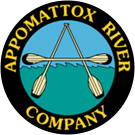Kayak Buying Guide: Materials
Once you’ve got some idea of what type of kayak to look for, the next big decision is what it should be made from. Every class of kayak that we've covered is offered in a variety of materials, each with a unique set of strengths and drawbacks. Here we’ll look at some of the most common materials you’ll find on the market.
Fiberglass: Fiberglass isn’t as common today as it was in the late 20th century. When kayaks and canoes were first mass produced in the 70s, fiberglass was one of the only efficient ways to make them. It is lightweight and creates a very stiff-hulled boat, which is quite efficient in flat water. One of the biggest reasons for the wane of fiberglass’s popularity is that it isn’t the strongest material out there anymore when it comes to impact and abrasion. When you find fiberglass canoes and kayaks today, they are usually combined with a gel coat or some other material technology to make a more durable craft than pure fiberglass alone. You’ll still find a lot of older pure fiberglass boats on the used market.
Carbon Fiber: Most of what we’ve said about fiberglass is also true for carbon fiber, except that carbon is more expensive and more brittle than fiberglass. It is the lightest material on the market, but usually is only found in specialty craft.
Wood: It’s been a long time since Appomattox River Company has carried a wooden canoe or kayak. Wooden craft are mostly produced by specialty shops and craftsmen today because they are some of the most expensive boats on the market. Wood kayaks are usually made to order, or you can buy plans and kits and make one in your garage if you’re handy and have a few years to spare. Few boaters would argue that wood isn't still the most classically beautiful material in the industry, but it does require exhaustive maintenance and a large up-front cost, which is why it’s not easy to come by anymore.
Inflatables: Ideal for those with limited storage space or transport options, inflatable kayaks conveniently pack down when they’re not on the water. Since their lines tend to be less precise, they are usually a little slower and less maneuverable than rigid kayaks, but they do offer an improved ride and stability in chop or whitewater due to their natural buoyancy and high volume. We don’t carry many inflatable kayaks at Appomattox River Company, but if you do think they are right for you, look for a model constructed with drop-stitch technology and reinforced rails. These will be safer and more durable than those constructed without these features.
Thermoformed Plastic: Thermoformed plastics are used to manufacture a very wide array of kayaks. These can be some of the cheapest or the most expensive plastic boats on the market. At its simplest, the thermoforming process involves taking a sheet of thin plastic, heating it, and vacuuming it to a mold until it sets in its new shape. This process can’t make a whole boat at once, so the top and bottom of the kayak are molded separately and then joined together. This creates a seam right at the waterline, which can be one of the most vulnerable spots on the boat if not done well.
The most budget-friendly kayaks you’ll find are made using this process. They’re often thinner, less durable, and sealed with a simple glue that is prone to leaks. These boats are great for getting a beginner out on flat water, but should never be used offshore or in swift or white water.
On the other end of the spectrum, you’ll find some of the highest-quality lightweight plastic boats made in a similar manner, using more advanced plastics and a meticulous manufacturing process. They can last a long time if properly cared for but are similar to fiberglass in their resistance to abrasion and impact. Some of these are made for offshore paddling, but you won’t find whitewater kayaks made from thermoformed materials.
Rotomolded Plastic: Rotomolded boats are made by pouring plastic powder into a mold. The mold is then turned while it’s heated and pops out a whole kayak in one piece when it’s done. This creates a boat with no center seam to go bad, and can also make thicker plastic than a thermoformed sheet mold. Rotomolded boats are sturdy and durable and provide an excellent balance of price and performance. Rotomolded plastic is especially prevalent in whitewater boats, because it is extremely resistant to impact and abrasion, which makes it ideal for use in rapids. Because it is thicker, rotomolded plastic tends to be one of the heaviest choices on the market. The lightest rotomolded boat we carry weighs about 35 pounds, but they can go all the way up to 150 pounds. Rotational molding is used for all shapes, sizes, and types of kayaks, so there is a huge variety to choose from in this material. Rotomolded boats are extremely easy to care for, and last a long time when properly looked after. We sell more rotomolded kayaks at Appomattox River Company than all other materials combined.








